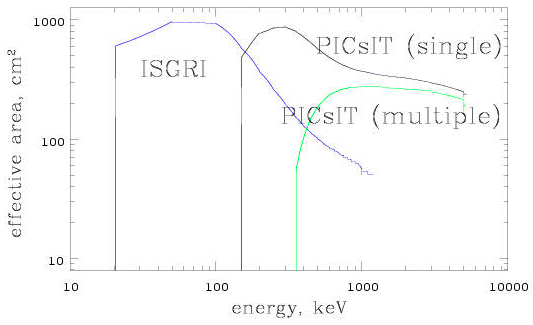 |
Principal Investigator:
with collaborating scientific institutes in Italy (INAF/IAPS Rome, INAF/IASF-Bologna, INAF/IASF-Palermo), France (CEA Saclay), Norway (U Bergen), Germany (IAA-Tübingen), Spain (University of Valencia), USA (NASA/MSFC Huntsville), Poland (Space Research Centre, Warsaw) and UK (University of Southampton).
The Imager IBIS provides diagnostic capabilities of fine imaging (12 arcmin FWHM), source identification and spectral sensitivity to both continuum and broad lines over a broad (15 keV-10 MeV) energy range. The Imager observes, simultaneously with the other instruments of INTEGRAL , celestial objects of all classes ranging from the most compact galactic systems to extragalactic objects. A tungsten coded-aperture mask (located at 3.2m above the detection plane) is optimized for high angular resolution. As diffraction is negligible at gamma-ray wavelengths, the angular resolution obtainable with a coded mask telescope is limited by the spatial resolution of the detector array.
The Imager design takes advantage of this by utilizing a detector with a large number of spatially resolved pixels implemented as physically distinct elements. The detector uses two planes: one 2600cm front layer of Cadmium-Telluride (CdTe) pixels, each (4 4 2) mm (width depth height); and a 3100cm layer of Caesium-Iodide (CsI) pixels, each (9 9 30)mm. The CdTe array (ISGRI) and the CsI array (PICsIT) are separated by 90mm. The detector provides the wide energy range and high sensitivity continuum spectroscopy required for INTEGRAL . The two-layer structure allows the paths of the photons to be tracked in 3D, as they scatter and interact with more than one element. Events can be categorized and the signal to noise ratio improved by rejecting those which are unlikely to correspond to real (celestial) photons, e.g., towards the high end of the energy range. The aperture is restricted by a lead shielding tube and shielded in all other directions by an active Bismuth Germanate (BGO) scintillator veto system.
The dependence of the IBIS effective area on energy is given in Figure 5.
If you want to know more about IBIS we recommend that you start with [3].